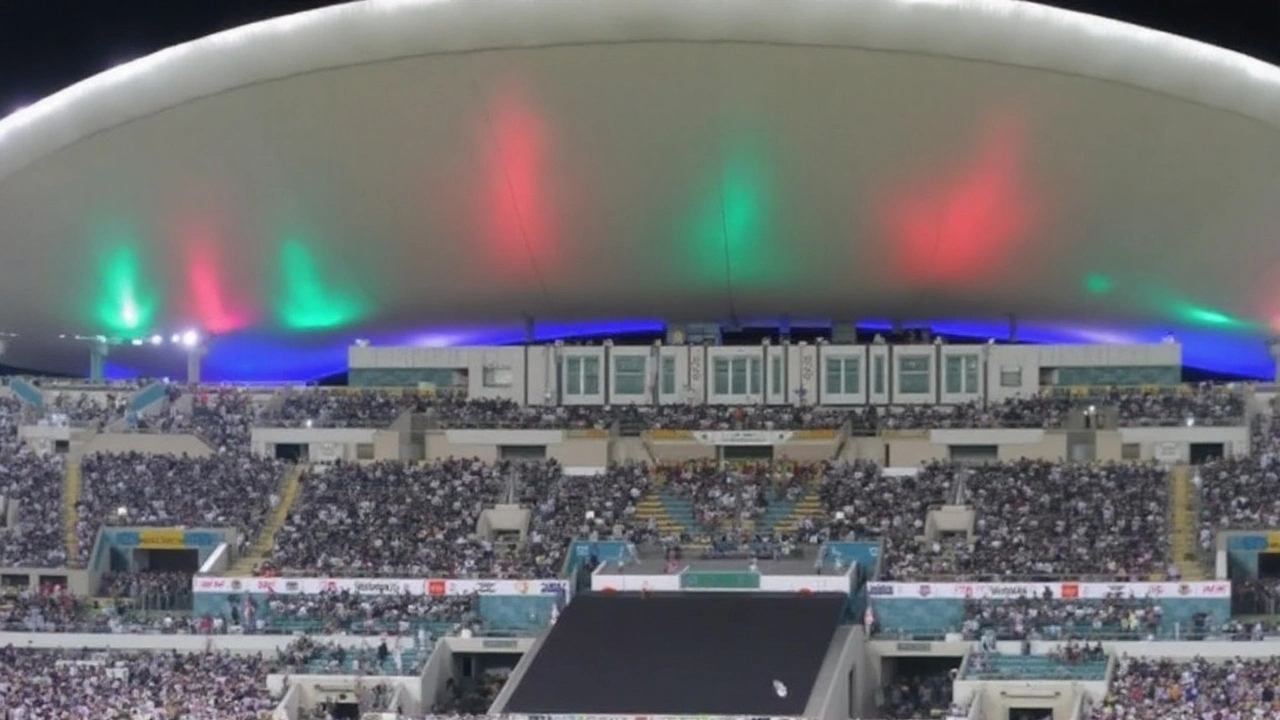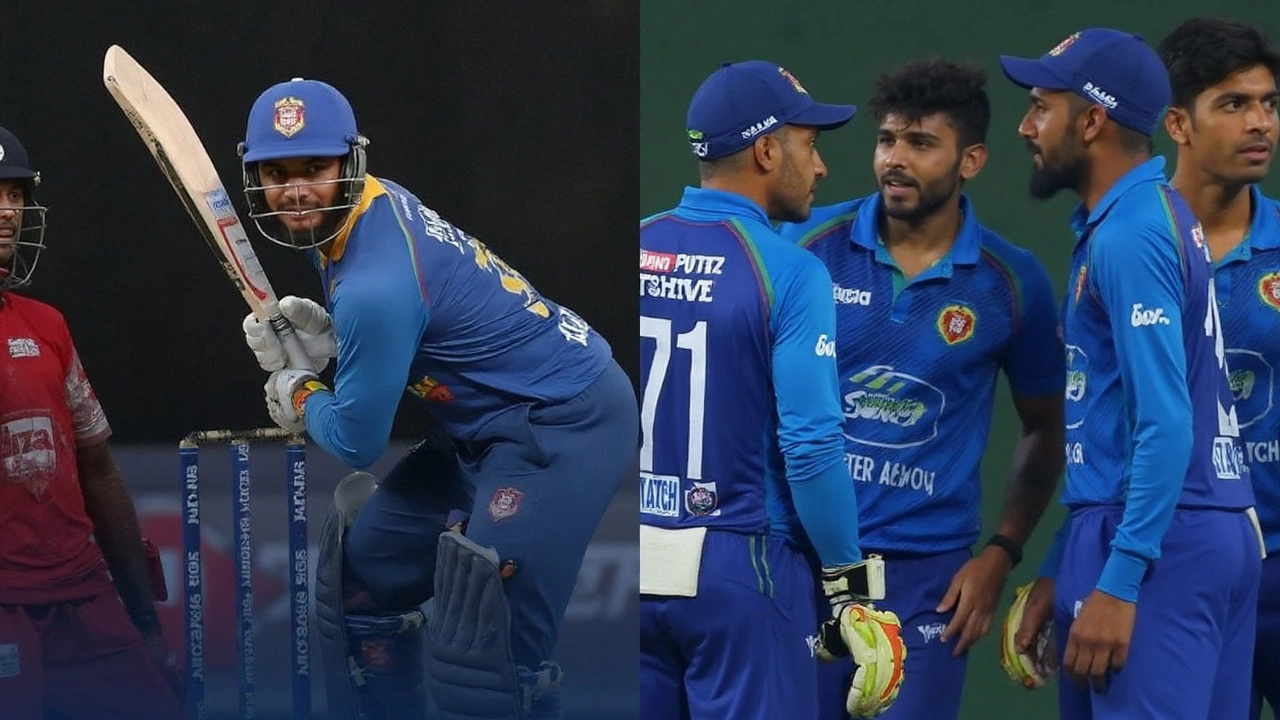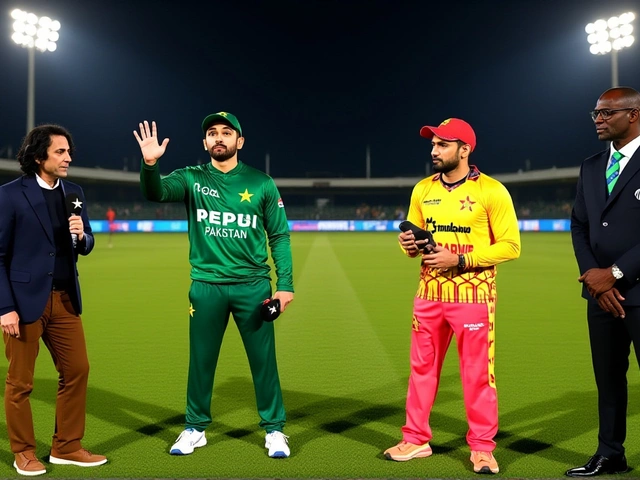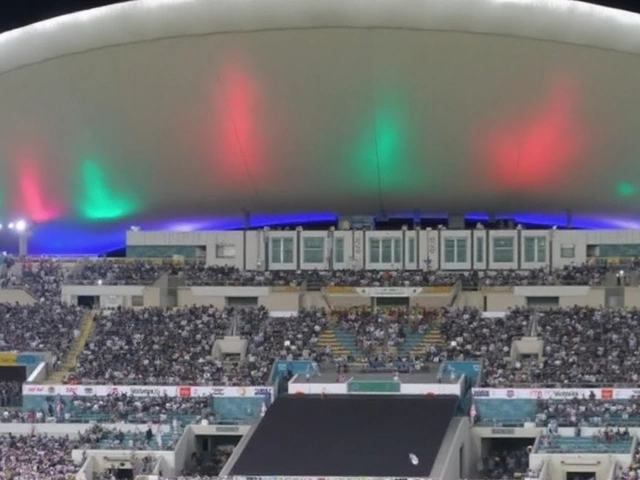 11
Sep,2025
11
Sep,2025
By Arvind
No fireworks on TV? As the Asia Cup 2025 kicks off on September 9 in the UAE, the biggest question isn’t who bowls the first over—it’s whether there will be an opening ceremony at all. The Asian Cricket Council (ACC) hasn’t announced a curtain-raiser, and that silence has kept fans guessing. At the same time, multiple logistical whispers from the venues suggest short, stadium-only acts have been rehearsed for September 9, 10, and 14—designed for those in the stands, not for broadcast.
This tug-of-war between spectacle and schedule is shaping a tournament that looks determined to put the cricket first. With eight teams split across two groups and a packed calendar, the focus is clearly on getting into match rhythm from day one. The opener features Afghanistan against Hong Kong in Abu Dhabi. India begin their campaign against hosts UAE, while the game every neutral watches—the India-Pakistan clash—arrives early on September 14. The final is booked for September 28.
What we know about the opening ceremony
Here’s the picture so far: the ACC has issued no official note about a grand opening. Yet, people familiar with stadium operations say rehearsals have taken place for tightly timed, on-ground segments. Think brief performances, light-and-sound cues, and player introductions wrapped around toss time—made for the crowd, not the cameras. If that holds, expect micro-ceremonies on September 9 and 10, and a larger in-stadium build-up on September 14 ahead of India vs Pakistan.
Why the low profile? A few likely reasons line up. First, the schedule is heavy and the weather is punishing in early September, even with evening starts—teams prefer minimal distractions. Second, security and crowd management are simpler without long pregame shows. And third, budgets across global tournaments have tightened; organizers often favor targeted in-venue experiences over expensive televised productions that can squeeze broadcast windows.
There’s also precedent. Recent multi-team cricket events have scaled back opening fanfare, especially when match density is high. Television partners, meanwhile, are comfortable filling early airtime with studio programming. So if you’re watching at home, expect more pregame analysis and fewer stage acts. If you’re at the ground, plan to arrive early—these in-stadium pieces tend to roll quietly, and you won’t see them again on your feed.
Could plans still change? Sure. Organizers can flip the switch late if rehearsals go smoothly and timings feel right. But as of now, everything points to a cricket-first start, with the show reserved for ticket holders.

Tournament format, fixtures, and stakes
The tournament features eight teams across two groups:
- Group A: India, Oman, Pakistan, United Arab Emirates
- Group B: Afghanistan, Bangladesh, Hong Kong, Sri Lanka
Each team plays the others in its group once. The top two progress to the Super Four, where they meet again in a round-robin. The best two from the Super Four make the final on September 28. That structure leaves room for India and Pakistan to meet as many as three times—group stage, Super Four, and the final—if results swing that way.
The first week sets the tone. Afghanistan vs Hong Kong opens in Abu Dhabi. India’s title defense begins against UAE. And the marquee date is September 14: India vs Pakistan, a matchup that will tilt ticket markets and social media metrics in minutes. For context, Sri Lanka are the last T20 Asia Cup champions (2022), while India won the 2023 ODI Asia Cup. This edition doubles as a key T20 tune-up before next year’s World Cup co-hosted by India and Sri Lanka.
India arrive as favorites under captain Suryakumar Yadav, with an eye on both silverware and combinations for the bigger stage in 2026. Pakistan, with their pace depth and white-ball hitting, are built for UAE conditions. Sri Lanka, the defending T20 champions from 2022, often punch above their perceived strength in multi-team tournaments. Bangladesh lean on experience and spin control. Afghanistan’s wrist spin and power hitters make them dangerous on any given night. Hong Kong bring continuity from Associate cricket. And Oman, making their Asia Cup debut, will treat every game as a shot at fast-tracking their rise.
Circle these dates if you’re planning watch parties:
- September 9: Afghanistan vs Hong Kong (Abu Dhabi)
- September 10: Second matchday with in-venue ceremony rehearsed
- September 14: India vs Pakistan (stadium build-up expected)
- September 19: India vs Oman, a first for the debutants against a tournament heavyweight
- September 28: Final
The UAE’s venues—primarily Abu Dhabi and Dubai—are built for quick turnarounds and massive crowds, especially for South Asian fixtures. Expect evening starts to dodge the worst of the heat, which means dew could play a role in chasing. Pitches here typically reward smart pace changes and disciplined spin, and square boundaries can bring mishits into play. Toss decisions will be debated hard.
For fans, the biggest immediate takeaway is the likely split in experiences. Inside the stadiums, you may catch short performances and intro sequences that won’t be broadcast. At home, you’ll get wall-to-wall studio shows and analysis but no live ceremony. Organizers have leaned into this model before: it reduces overruns, keeps players on routine, and lets broadcasters control their own pregame rhythm without being hostage to a stage clock.
Ticket demand is already heavy for the September 14 game. Dynamic pricing is common for these fixtures, and resale markets tend to spike quickly. If you’re traveling, budget extra time at gates—large diaspora crowds, layered security, and bag checks slow entry. Most matches will recommend early arrival, especially on the 14th, when the in-stadium segments are likely to run.
On the competitive side, India’s biggest task is balancing the urge to dominate with the need to test bench options ahead of a packed white-ball year. Pakistan usually enjoy the UAE’s pace-friendly, skiddy surfaces but will want stability in the middle overs. Sri Lanka’s pathway hinges on spin control and tight death overs. Afghanistan remain capable of flipping games in five overs of elite spin or late-order power. Bangladesh’s experience in tournament cricket keeps them in every contest. Oman and Hong Kong will chase moments—powerplays, fielding pressure, and calm in the chase—where a few clean overs can change a result.
All of this is unfolding with a sensitive political backdrop that limits bilateral India-Pakistan fixtures to multi-nation events. The neutral venue helps: teams know the conditions, the travel is simple, and the crowds bring the noise. From an operational lens, UAE is a known quantity for the ACC—security protocols are strict, logistics are streamlined, and the stadiums can pivot between matchdays quickly.
Broadcast strategy tracks with the no-ceremony stance. Without a long, live opening show to programme around, networks can spend that time on tactical board breakdowns, player interviews, and toss coverage that starts closer to first ball. Social media will do the heavy lifting for atmosphere—expect player walk-ins, warm-up clips, and crowd shots to be the main currency before play.
Could fans still see a surprise TV moment? It’s possible, especially on September 14 if timings fall neatly. But every signal so far says the bells and whistles will stay mostly inside the stadiums. For a tournament this dense—with group games, Super Four, and a tight turnaround to the final—organizers seem happy to let the cricket sell itself.
In short, pencil in a full calendar, prepare for evening finishes, and expect the noise to peak around India-Pakistan. Whether the curtain rises with a flourish or not, the stage is already set. The first ball comes on September 9. The last one lands on September 28. Everything in between will decide who leaves the UAE with a trophy—and who leaves with more questions than answers.




